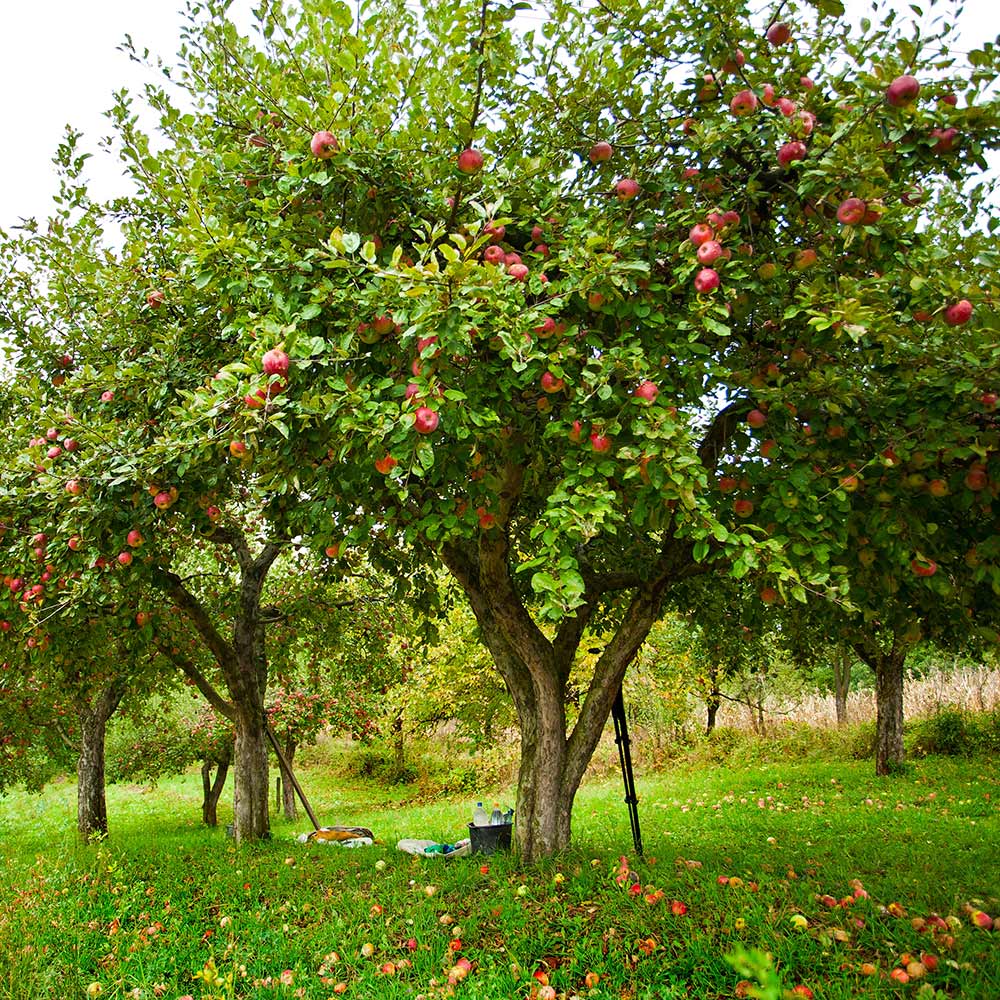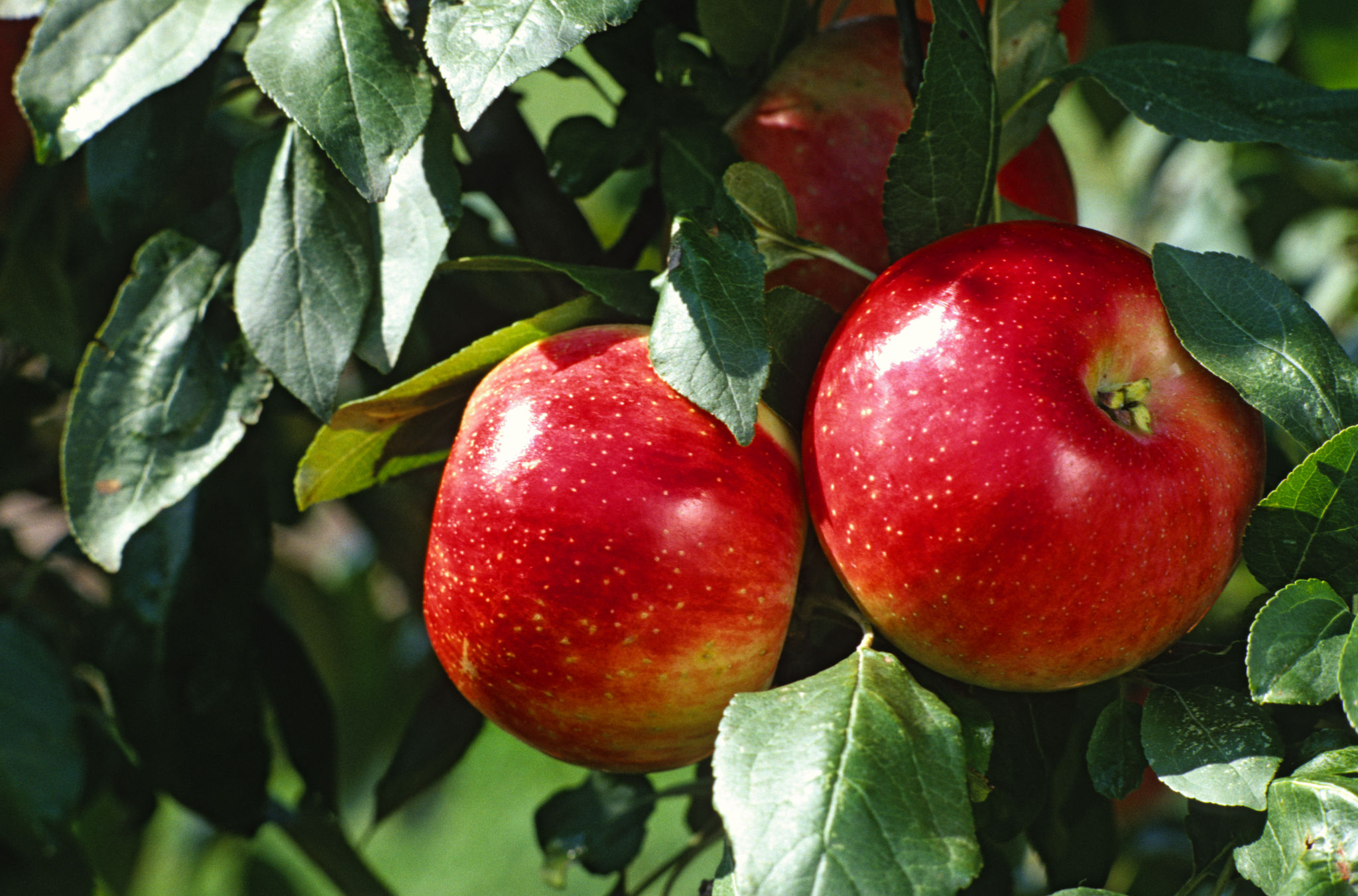To grow an apple tree, choose a sunny location with well-draining soil and plant a healthy apple sapling. Water regularly and provide proper nutrients for optimal growth.
Additionally, ensure proper pruning to promote fruit production and protect from pests and diseases. Growing an apple tree can be a rewarding experience, providing you with fresh, flavorful fruit right from your backyard. By following a few simple steps, you can have a thriving apple tree in no time.
Whether you are a beginner or an experienced gardener, learning how to nurture and care for apple trees is essential for a successful harvest. In this guide, we will explore the key aspects of growing apple trees, including selecting the right location, planting techniques, maintenance practices, and tips for troubleshooting common issues. With the right knowledge and care, you can enjoy the fruits of your labor for years to come.
Choosing The Right Apple Tree Variety
Growing an apple tree in your garden can be a rewarding and fruitful experience. One of the most crucial considerations for success is choosing the right apple tree variety. Different varieties thrive in different conditions, so it’s essential to consider factors such as climate, hardiness zones, space, and soil requirements when selecting the perfect apple tree for your needs.
Consider Climate And Hardiness Zones
Before choosing an apple tree variety, consider the climate and hardiness zones of your area. Apple trees thrive in different climates, so selecting a variety that is suited to your specific climate is crucial for successful growth and fruit production. Certain apple varieties are more tolerant of colder temperatures, while others require a warmer climate to thrive. Consult with a local nursery or gardening expert to determine which apple tree varieties are best suited for your region.
Determine Space And Soil Requirements
When selecting an apple tree variety, it’s important to consider the space and soil requirements. Some apple tree varieties require more space to grow and mature, while others are more compact and suitable for smaller gardens. Additionally, different varieties have specific soil requirements, such as well-drained soil or specific pH levels, so it’s essential to assess your garden’s soil conditions before making a selection. Be sure to choose an apple tree variety that is compatible with your garden’s available space and soil characteristics to promote healthy growth and abundant fruit production.

Credit: www.youtube.com
Preparing The Soil And Planting
Before growing an apple tree, proper preparation of the soil and the planting process are crucial for the tree’s successful growth.
Test And Improve Soil Quality
Start by testing the soil’s pH level and nutrient content to ensure it is suitable for apple tree growth.
- Use a soil testing kit to check the pH level.
- Amend the soil with organic matter like compost or aged manure to improve its fertility.
Select A Suitable Planting Location
Choose a sunny location with well-draining soil for optimal apple tree growth and fruit production.
- Ensure the area has good air circulation to prevent diseases.
- Avoid planting in low-lying areas prone to frost or waterlogging.
Digging The Planting Hole
When digging the planting hole, make sure it is wide enough to accommodate the tree’s roots without bending or crowding.
- Loosen the soil at the bottom of the hole for better root penetration.
- Position the tree so that the graft union is above the soil line for proper growth.
Planting And Caring For The Apple Tree
Choose a sunny location with well-draining soil to plant your apple tree.
Water the apple tree deeply once a week, ensuring the soil is moist but not waterlogged.
Apply a layer of organic mulch around the base of the tree to retain moisture and suppress weeds. Fertilize with a balanced fertilizer in spring.
Prune the apple tree in late winter to remove dead branches and shape the tree. Train the branches to encourage proper growth.
Implement pest control measures like spraying with neem oil and keeping the area clean. Monitor for common apple tree pests and diseases.
Pollination And Fruit Production
Understanding the pollination process and effectively managing fruit production is essential for growing healthy and thriving apple trees. Pollination is a critical phase in the life cycle of the apple tree, directly impacting the quantity and quality of the fruits produced. By understanding how pollination works and taking steps to ensure proper pollination, you can maximize the fruit production of your apple trees. Let’s delve deeper into the intricacies of apple tree pollination and fruit production.
Understanding Apple Tree Pollination
Apple trees are primarily pollinated by bees, which transport pollen from the male parts of the flowers (anthers) to the female parts (stigma) of the same or another flower. Cross-pollination is necessary for most apple tree varieties, as it enhances fruit set and quality. Different apple varieties have different pollination requirements, and some may require a compatible pollinator tree to ensure proper cross-pollination and fruit production.
Ensuring Proper Pollination
To ensure proper pollination of apple trees, it’s crucial to plant compatible varieties in close proximity to facilitate cross-pollination. Introducing honeybee hives or native bee habitats near the apple orchard can significantly enhance pollination success. Additionally, avoiding the use of pesticides during the flowering period is essential to protect the pollinators and safeguard the pollination process.
Maximizing Fruit Production
Maximizing fruit production in apple trees involves optimizing the pollination process and providing ideal growing conditions. Proper management of the orchard environment, including adequate irrigation, nutrition, and pest control, is vital for ensuring healthy fruit development. Pruning the apple trees during the dormant season helps maintain an open canopy, allowing sunlight to reach the inner branches and optimize fruit production.
Harvesting And Enjoying Your Apple Tree
Learn how to successfully grow an apple tree and enjoy the bountiful harvest it brings. This comprehensive guide walks you through the process, from planting to picking.
Identifying Ripeness
Before you start harvesting your apples, it’s important to know how to identify when they are ripe and ready to pick. The color and texture of the fruit can give you a good indication of its ripeness. Mature apples usually have a deep, rich color, and their skin should feel firm but not overly hard or soft.
Another way to know if your apples are ripe is by giving them a gentle twist. If they come off the tree with just a slight tug and the stem breaks cleanly from the branch, it’s a sign that they are ready to be harvested. Keep in mind that not all apples ripen at the same time, so it’s best to check the readiness of each individual fruit.
Harvesting Techniques
When it’s time to harvest your apples, there are a few techniques you can use to ensure you gather the fruit safely without damaging it. One method is to cup the apple in the palm of your hand and gently lift it upward, twisting it slightly as you pull. Avoid pulling or tugging on the fruit, as this can cause bruising or even detach the stem from the apple.
Alternatively, you can use pruning shears or a sharp knife to carefully cut the stem about half an inch above the apple. This method is particularly useful for large or hard-to-reach apples that may be at risk of falling and getting damaged if you try to pick them by hand.
Storing And Preserving Apples
Apples can be stored for several months if they are properly handled and stored in the right conditions. The key to keeping your apples fresh and crisp is to store them in a cool, dark place with good ventilation. A basement or cellar can be an ideal storage location, as long as the temperature remains between 30°F and 40°F.
To prevent any rotten or decayed apples from spoiling the rest, it’s important to sort through your harvest and remove any damaged or bruised fruits. You can store your apples in crates, baskets, or even plastic bags with small holes to allow for proper air circulation. Regularly check on your stored apples and remove any that show signs of decay.
Delicious Apple Recipes
Now that you have harvested your apples and stored them safely, it’s time to enjoy the delicious fruits of your labor! There are endless possibilities when it comes to apple recipes, from classic apple pies to refreshing apple salads.
One popular recipe is a simple yet satisfying apple crisp. To make it, combine sliced apples with a mixture of oats, flour, brown sugar, and spices. Bake until the topping is golden and the apples are tender. Serve warm with a scoop of vanilla ice cream for a delightful dessert.
If you’re feeling adventurous, you can also try making homemade applesauce or even apple butter. These can be enjoyed on their own, spread on toast, or used as ingredients in various dishes and baked goods.
With these tips for identifying ripeness, harvesting techniques, storing and preserving apples, and delicious apple recipes, you’ll be able to make the most of your apple tree and enjoy its tasty fruits throughout the year!

Credit: extension.umn.edu

Credit: www.homedepot.com
Frequently Asked Questions For How To Grow An Apple Tree
Can You Grow An Apple Tree From An Apple?
Yes, you can grow an apple tree from an apple seed. Plant the seeds in well-draining soil, keep it moist, and wait for germination.
How Long Does It Take To Grow An Apple Tree?
An apple tree typically takes 5 to 7 years to grow and start producing fruit. Optimal growth requires proper care and attention.
Do You Need 2 Apple Trees To Produce Fruit?
No, a single apple tree can self-pollinate and produce fruit on its own without needing another tree.
Are Apple Trees Easy To Grow?
Yes, apple trees are generally easy to grow. They require sunlight, well-drained soil, and regular pruning. Proper care can help them thrive.
Conclusion
Growing an apple tree requires patience and attention to detail. By following the steps outlined in this guide, you can successfully cultivate a healthy apple tree in your garden or orchard. Remember to provide proper care, from soil preparation to regular pruning and pest management.
With dedication and knowledge, you can enjoy the fruits of your labor for years to come.


